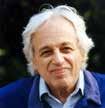We’d like to extend a particular welcome to everyone joining us from St Ignatius College in Enfield, we hope you enjoy the concert!
Just head to our website to sign up.
Subscribers to our email updates are the first to hear about new events, offers and competitions.
You can also write to us at Southbank Centre, Belvedere Road, London SE1 8XX, or email hello@southbankcentre.co.uk
We hope you enjoy your visit. If you need any information or help, please ask a member of staff.
The Southbank Centre is made up of the Royal Festival Hall, Queen Elizabeth Hall, Purcell Room, Hayward Gallery, National Poetry Library and Arts Council Collection. We’re one of London’s favourite meeting spots, with lots of free events and places to relax, eat and shop.
the world’s most exciting artists at our venues in the heart of London. We’re here to present great cultural experiences that bring people together, and open up the arts to everyone.
of the nation’s top visitor attractions, showcasing
We’re the largest arts centre in the UK and one
Welcome to the Southbank Centre
This year we have begun an even deeper relationship with the London Borough of Enfield, and the rehearsals for this concert took place in St Ignatius College – an all-boys school in the borough. We worked with young musicians and composers and introduced students to the music in this programme. With music declining in the national curriculum, we feel it is fundamentally important to do more – just as we did in the early 1980s as the first ensemble in the UK to start a music education programme. We are hugely grateful to all the specific donors to this event – such additional support is needed for us right now. And your presence as an audience member is as important as anything else – so thanks for coming.
It’s a pleasure to welcome back Vimbayi Kaziboni to conduct us in this eclectic programme that includes UK premieres, and also the first part of our celebration of the anniversary of György Ligeti, with whom the London Sinfonietta had an important relationship. It’s also wonderful to welcome Hidejiro Honjoh from Japan for Dai Fujikura’s Shamisen Concerto.
Welcome to tonight’s concert
WELCOME
Let us know by scanning the QR code or going to https://bit.ly/3WjxcEF



Did you enjoy this concert?
The London Sinfonietta is grateful to Arts Council England for its generous support of the ensemble, as well as the many other individuals, trusts and businesses who enable us to realise our ambitions. This event is produced by the London Sinfonietta, and supported by the Southbank Centre, the Daiwa Anglo-Japanese Foundation, and the Chapman Charitable Trust. with the friendly support of the Ernst von Siemens Music Foundation. The work of the London Sinfonietta is supported by Arts Council England and the John Ellerman Foundation
*London Sinfonietta Principal Player
Helen Tunstall* harp
Joe Richards percussion
David Hockings* percussion
Clíodna Shanahan harpsichord/harmonium
Philip Moore piano/celeste
Lynda Houghton double bass
Adrian Bradbury cello
Paul Silverthorne* viola
Hilaryjane Parker violin
2023/24 SEASON AT THE SOUTHBANK CENTRE
LIGETI 100


Celebrating the life of the provocatively distinctive composer György Ligeti, beloved of Stanley Kubrick, in his centenary year
Sat 14 Oct, Queen Elizabeth Hall
MARIUS NESET: GEYSER
We reunite with “marvel” Norwegian saxophone virtuoso and composer Marius Neset to perform our “elemental” third collaboration
Fri 17 Nov, Queen Elizabeth Hall
21ST CENTURY VOICES
An unflinching critique of modern society, contrasting excerpts from Hans Werner Henze’s iconic Voices with contemporary responses
Sat 25 Nov, Queen Elizabeth Hall
A BIRTHDAY CELEBRATION
We mark the anniversary of our first-ever concert with a mix of new commissions and classic chamber repertoire
Wed 24 Jan, Purcell Room

SUPPORT US
LONDON SINFONIETTA CHANNEL
Explore the music, composers and performers behind the ensemble with concert films, podcasts, guides and more at londonsinfonietta.org.uk/channel

For full details and to book visit londonsinfonietta.org.uk or southbankcentre.co.uk and join our e-list to receive further details of workshops and open rehearsals throughout the year
Find us on social media:
@Ldn_Sinfonietta
@london.sinfonietta
LondonSinfonietta
LondonSinfonietta
london.sinfonietta
By making a donation to the London Sinfonietta, you can help create world-class new music projects both onstage and online. You can help us reach thousands of young people each year through our composition programmes in schools, and enable us to provide worldclass training to the next generation of talent. londonsinfonietta.org.uk/support-us
Jonathan Morton* violin
Ryan Hume trombone
Aaron Azunda Akugbo trumpet
Zoë Tweed french horn
Amy Green alto/baritone saxophone
Laura Vincent bassoon/contrabassoon
Katie Lockhart clarinet/bass clarinet
Timothy Lines B flat/E flat/bass clarinet


Olivier Stankiewicz oboe/cor anglais
Philippa Davies flute/piccolo/alto flute
London Sinfonietta:


Vimbayi Kaziboni conductor
Hidejiro Honjoh shamisen
György Ligeti Chamber Concerto
IV Presto
III Movimento preciso e meccanico
II Calmo, sostenuto
I Corrente (Fließend)
Tania León Rítmicas
Dai Fujikura Shamisen Concerto (UK Premiere) Interval
IV Slalom
VII Romp
VI Gambol
III Pointillistic Groove Flutter Pirouettes

II Tiptoe Caper
I Scatter V Dream
Augusta Read Thomas Terpsichore’s Box of Dreams (UK Premiere)
Southbank Centre’s Queen Elizabeth Hall
Thursday 25 May 2023, 7.30pm
FIREWORKS
22/23 SEASON CONCERT PROGRAMME
FIREWORKS
Thursday 25 May 2023, 7.30pm Southbank Centre’s Queen Elizabeth Hall

Programme Notes
Augusta Read Thomas Terpsichore’s Box of Dreams
In ancient Greek mythology, Terpsichore is the Goddess of Dance and Delight, and one of the Muses: the daughters of Zeus and Mnemosyne.
I wanted to sculpt music that could turn freely in the air: lively, sprightly, flexible, fluid. While this is not exactly a “concerto for ensemble”, each of the thirteen musicians is featured in several soloistic, virtuosic passages. Although my music is meticulously notated, I like it to sound as though it were spontaneously invented. I have a vivid sense that the process of the creative journey (rather than a predictable fixed point of arrival) is, for me, the essence.
The composition imagines the magic box containing many things, including seven varied, colourful dances. Throughout the sixteenminute composition, the brief dances become progressively more virtuosic. The longest Dance (#5: Dream) starts at the midpoint of the composition. It is elegant, lyrical and resonant, concluding with an awaking-from-slumber at sunrise with morning birds and running squirrels. Suddenly, Dance #6: Gambol swirls forward. After a 50-second interlude featuring solo violin, oboe, and clarinet, the Gambol leads to the irreversible escapade that is Dance #7: Romp.
The musical materials of Terpsichore’s Box of Dreams are agile and spirited, and their flexibility allows pathways to braid harmonic, rhythmic, timbral, and contrapuntal elements that are constantly transformed—at times whimsical and light, at times jazzy, at times layered and reverberating with overtly lyrical effervescence. Terpsichore’s Box of Dreams unfolds a labyrinth of musical interrelationships and connections that showcase these thirteen world-class musicians in a virtuosic display of rhythmic and timbral dexterity, precision, and teamwork.
—Augusta Read Thomas
works in the Western classical music tradition scored solely for the newly conceived Percussion Ensemble: an ensemble comprised exclusively of all types of percussion instruments.
—Tania León
Tania León (b. Havana, Cuba) is highly regarded as a composer, conductor, educator, and advisor to arts organizations. Her orchestral work Stride, commissioned by the New York Philharmonic, was awarded the 2021 Pulitzer Prize in Music. In 2022, she was named a recipient of the 45th Annual Kennedy Center Honors for lifetime artistic achievements. In 2023, she was awarded the Michael Ludwig Nemmers Prize in Music Composition from Northwestern University. Most recently, León became the London Philharmonic Orchestra’s next Composerin-Residence—a post she will hold for two seasons, beginning in September 2023. She will also hold Carnegie Hall’s Richard and Barbara Debs Composer’s Chair for its 2023-2024 season.
György Ligeti Chamber Concerto
This is a “concerto” insofar as all thirteen instrumentalists have virtuoso tasks to discharge, and all thirteen are equal. There is no structuring into “solo” and “tutti,” however: rather, new groups of soloists constantly replace one another. The texture is always transparent (with the exception of one tutti passage in the third movement). It almost never happens that an individual solo instrument comes to the fore: there are always two, three, or more instruments playing virtuosically together. The piece has four movements corresponding to different types of motion. The motion in the first movement is gentle and fluent; in the second it is almost stationary, but the stasis is interrupted by harsh, agitated sequences; the third movement is mechanical, as though a curious, half-malfunctioning precision apparatus were set in motion; the very rapid fourth movement unites contrasting types of
“True virtuoso composer”
(New Yorker) Augusta Read Thomas’ impressive body of work embodies unbridled passion. Championed by such luminaries as Barenboim, Rostropovich, Boulez, Eschenbach, Salonen, and Knussen, she is now Professor at The University of Chicago, formerly Chairperson of the American Music Center, and Mead Composer-in-Residence for the Chicago Symphony from 1997 to 2006. Her awards include the Ernst von Siemens Music Prize. She is a member of the American Academy of Arts and Sciences, and the American Academy of Arts and Letters.

Dai Fujikura Shamisen Concerto
Born in Osaka, Japan, and based in the UK since the age of fifteen, Dai Fujikura is a composer whose music weaves its way across the boundaries of nation and genre. But until a few years ago, he had never written for the shamisen. A three-stringed instrument played with a large plectrum called a bachi, the shamisen—which, to Western listeners, sounds similar to a banjo—is of central importance to both folk and classical musical traditions in Japan. It dates from the mid-sixteenth century and has a long history both as a solo instrument and as an accompaniment to song, dance, puppetry, and drama.
Fujikura’s Shamisen Concerto was commissioned by the shamisen player Hidejiro Honjoh and their mutual friend, Ayako Hasegawa. It is based upon Fujikura’s Neo (2014), a solo work also written for Honjoh. The composer writes: “I did not grow up listening to, or knowing much about, Japanese traditional instruments. Therefore, I began with research. While writing Neo, I spent many hours on video chat with Hidejiro. When I began the concerto, Hidejiro sent a shamisen to my home in London, along with a book by his master teacher, Hidetaro Honjoh: Shamisen for Beginners
Like an electric guitarist in a rock band, the shamisen player adds distortion to the sound—
motion, from “scurrying lightly” to “jerky and fragmented.” As different as the character of their motion is, the four movements are bound together by the unity of the compositional texture: common harmonic and rhythmic principles apply throughout the piece.
Harmony: Precisely defined harmonies with a fixed interval structure alternate with “fields of turbidity,” where the clear harmonies are gradually blurred and a new harmony, with a different interval structure, then crystallizes out.
Rhythm: There are three types of rhythmic sequences: those that consist of the combination of precisely defined individual voices, which means clear rhythmic articulation; those in which the individual voices are clearly defined, but each has a different speed ; those, finally, in which the individual voices have no defined rhythm but mostly proceed “as fast as possible,”
—György Ligeti
György Ligeti was one of the most important avantgarde composers in the latter half of the twentieth century. With Boulez, Berio, Stockhausen, and Cage, he was one of the most innovative and influential progressive figures of his time. His early works show the influence of Bartók and Kodály, and like them, he studied folk music and made transcriptions from folk material. In Apparitions (1958-1959) and Atmosphères (1961), he developed a “micropolyphony” style forged from chromatic cluster chords that are devoid of conventional melody, pitch and rhythm, but instead grow into timbres and textures that yield new sonic possibilities. Ligeti was almost alone among progressive composers from the latter twentieth century who have written popular and widely performed music.

the opposite of a traditional, Western instrumental approach. Naturally, this fascinated me. As I wrote the concerto, I thought about how to expand and enhance the soloist’s material. A composer is not unlike a wedding planner, perhaps: I make the shamisen shine by creating a world where the soloist is the centre of attention. The attacks and riffs of the shamisen’s distorted sound are echoed and expanded in sharp attacks from the orchestra. Additionally, accompanying sounds in the orchestra inspire new material in the solo part. I observe those chemical reactions happening perpetually in the score, until the composition tells me, “Now, we finish.” That’s the time to wrap up the piece.”
—Lucy Caplan, Copyright © 2019 by Lincoln Center for the Performing Arts, Inc
Born in 1977 in Osaka Japan, Dai Fujikura was fifteen when he moved to the UK. The recipient of many composition prizes, he has received numerous international

Festival, BBC Proms, Bamberg Symphony, Chicago Symphony Orchestra, Simón Bolívar Symphony Orchestra and more. He has been Composer-in-Residence of Nagoya Philharmonic Orchestra since 2014 and held the same post at the Orchestre national d’Île-de-France in 2017/18.

Tania León Rítmicas

This is a five-movement work I based on a rhythmic spectrum that creates a rainbow of polyrhythmic inventions emerging from the Son and Guaguancó clave—a key pattern used as a tool for temporal organisation and as a ground or rhythmical motive, and which is at the basis of each movement.
The clave pattern is a fundamental Africanderived rhythmic device which consists of irregular pulses repeated as a persistent structure—ostinato—throughout a piece. The rhythmical tool creates and instills music with a sense of energetic groove and can be found in the music of Cuba, Puerto Rico, throughout the rest of the Caribbean basin, in Brazil, in Latin
Hidejiroh Honjoh shamisen
Hidejiro Honjoh has performed with ensembles around the world, and was the first shamisen player to be featured as a soloist at London’s Wigmore Hall. He received the 70th Arts Festival New Face Award from the Agency for Cultural Affairs, and was the first shamisen performer to receive the prestigious Idemitsu Music Award in 2014 and the Kyoto Aoyama Music Award in 2018.
Vimbayi Kaziboni conductor Described as a conductor of “great intensity, without distancing, maneuvering, without indifference” (neuemuzikzeitung), Zimbabwean-born conductor Vimbayi Kaziboni (b. 1988) is widely sought-after for his depth of approach and his interpretive imagination and expressivity. He has led many critically lauded performances with orchestras across the globe, performing at some of the most prestigious concert halls in the world.

LONDON SINFONIETTA

The London Sinfonietta is one of the world’s leading contemporary music ensembles. Formed in 1968, we are a Resident Orchestra at the Southbank Centre and Artistic Associate at Kings Place, with a busy touring schedule. We have commissioned over 450 works and premiered hundreds more.

We experiment constantly, working with the best artists, collaborating with young people and the public to produce projects often involving film, theatre, dance and art. We challenge audience perceptions by commissioning work which addresses issues in today’s society, including tackling climate change and racial inequality. We support musical creativity in schools and communities across the UK, while our annual London Sinfonietta Academy is an unparalleled opportunity for young performers and conductors to train for their professional future with our Principal Players.
We continue to innovate with our digital Channel, featuring video programmes and podcasts about new music. Steve Reich described our stunning film of his Violin Phase as “the most satisfactory version [he’d] ever seen”, while our documentary film about Laura Bowler’s Houses Slide generated national press coverage. We created Steve Reich’s Clapping Music App for iPhone, iPad and iPod Touch, a participatory rhythm game that has been downloaded over 600,000 times worldwide. The back catalogue of recordings of the Ensemble over 50 years has helped to cement its world-wide reputation. More recent recordings include George Benjamin’s Into the Little Hill (Nimbus), Benet Casablancas’ The Art of Ensemble (Sony Classical), David Lang’s Writing on Water (Cantaloupe Music) Philip Venables’ debut album Below the Belt (NMC) and Marius Neset’s Viaduct (ACT). londonsinfonietta.org.uk














